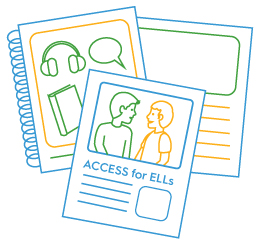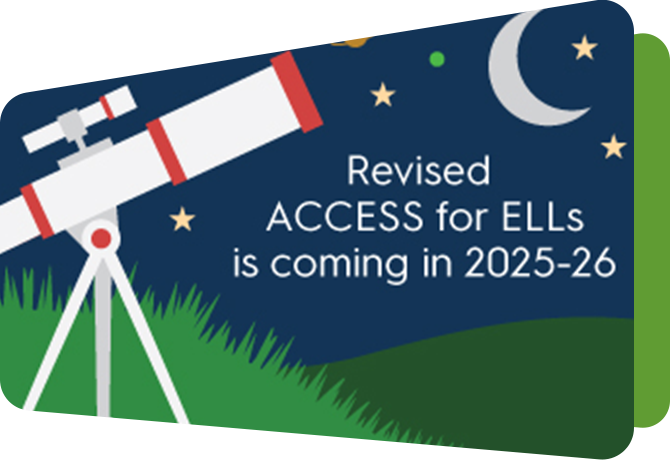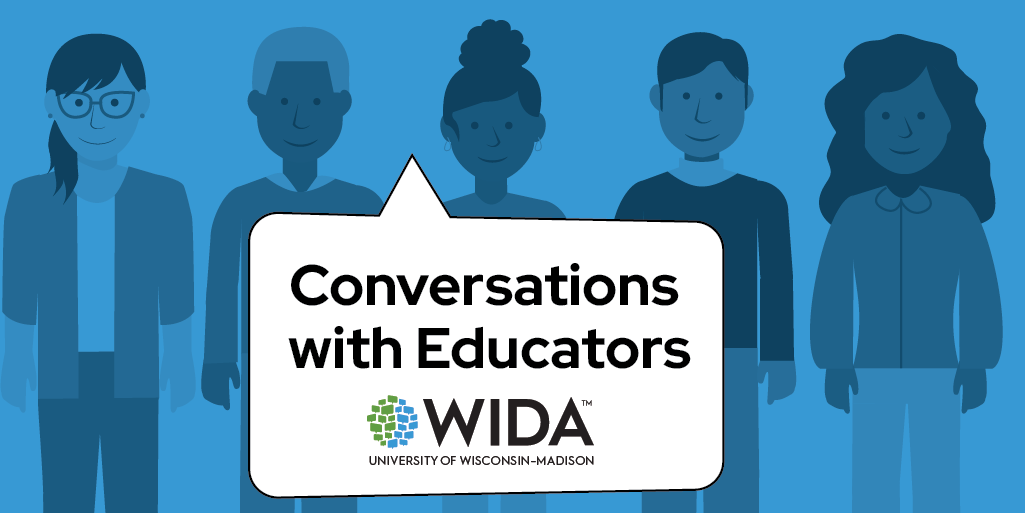Resources/Recursos
Featured Resources



All resources/Todos los recursos
Filter resources by:
Resources/Recursos
Sample WIDA Alternate ACCESS District Frequency Report
District Frequency Reports show the number and percentage of tested students who scored at each proficiency level. There are separate reports for each grade.
Resource Details View Download NowReleased February 2025
Sample ACCESS for ELLs School Frequency Report
School frequency reports show the number of students who've tested at each proficiency level for all domains. There are separate reports for each grade.
Resource Details View Download NowReleased February 2025
Sample ACCESS for ELLs State Frequency Report
State Frequency Reports show the number and percentage of tested students who scored at each proficiency level. There are separate reports for each grade.
Resource Details View Download NowReleased February 2025
Muestra ACCESS for ELLs informe individual del estudiante
Este informe brinda información sobre el nivel de desarrollo del alumno en la prueba de desempeño lingüístico en inglés ACCESS for ELLs. Esta prueba se basa en los estándares de desarrollo del idioma inglés de WIDA y se emplea para medir el progreso de los alumnos en el aprendizaje del inglés. Los resultados se informan como Niveles de desempeño lingüístico del idioma y como Escalas de puntaje.
Detalles del recurso Ver Descargar ahoraReleased February 2025
Sample Alternate ACCESS Individual Student Report for Families
This version of the report is for families and provides information about a student’s scores on the Alternate ACCESS English language proficiency test. The report contains the critical information families need to know and can be sent home with students and/or discussed at conferences with parents/guardians.
Resource Details View Download NowReleased February 2025
Sample ACCESS for ELLs Student Roster Report
Student Roster Reports show individual students' domain, composite and overall scores. There are separate reports for each grade.
Resource Details View Download NowReleased February 2025
Sample ACCESS for ELLs Individual Score Report (English)
This report provides information about the student’s scores on the ACCESS for ELLs English language proficiency test. This test is based on the WIDA English Language Development Standards and is used to measure students’ progress in learning English. Scores are reported as Language Proficiency Levels and as Scale Scores.
Resource Details View Download NowReleased February 2025
Action Research: A catalyst for comprehensive teaching and learning in multilingual contexts
This WIDA Snapshot introduces classroom action research – when researchers and educators work together to address classroom challenges – by encouraging teachers to use their researcher voices to make meaningful contributions to the field, whether through collaborative or independent approaches.
Resource DetailsReleased February 2025
The Key Language Uses in Bilingual Writing
This WIDA Webinar examines the Key Language Uses in writing in both Spanish and English. A WIDA expert explores an analysis of bilingual writing examples and mentor texts using the lens of the Key Language Uses and los usos clave del lenguaje del Marco DALE.
Resource DetailsReleased January 2025
Sample WIDA Alternate ACCESS State Frequency Report
State Frequency Reports show the number and percentage of tested students who scored at each proficiency level. There are separate reports for each grade.
Resource Details View Download NowReleased January 2025
Sample ACCESS for ELLs District Frequency Report
District Frequency Reports show the number and percentage of tested students who scored at each proficiency level. There are separate reports for each grade.
Resource Details View Download NowReleased January 2025
Alternate Can Do Descriptors
The Alternate Can Do Descriptors (Alt Can Dos) are the first-ever Can Do Descriptors for multilingual learners with the most significant cognitive disabilities. The Alt Can Dos exemplify what students can do with communication and language at various stages of English language development.
The Alt Can Dos are arranged into the same grade-level clusters (K–2, 3–5, 6–8 and 9–12) as WIDA Alternate ACCESS. Within each grade-level cluster, the Alt Can Dos are organized by interpretive (listening and reading) and expressive (speaking and writing) communication modes for each WIDA ELD Standard and the five levels of English language development.
Resource Details View Download NowReleased October 2024
Using ACCESS for ELLs to Promote Beneficial Outcomes for English Learners Video
Released October 2024
Introducing WIDA Screener for Kindergarten
This WIDA Screener for Kindergarten eSummit session recording provides an in depth look at the test.
Resource DetailsReleased October 2024
Marco DALE Digital Explorer
This website serves as a digital database of the Marco de los estándares del desarrollo auténtico del lenguaje español de WIDA (Marco DALE). It categorizes Language Expectations in two ways: by the Marco DALE standard statement and grade-level clusters, and by the Key Language Use and communication mode. Proficiency Level Descriptors (PLDs) can be explored by grade level (K-1 and 2-12) and communication mode.
Resource DetailsReleased September 2024
ACCESS or Alternate ACCESS?
In this webinar recording, WIDA experts explain the decision-making process for choosing whether a multilingual learner should take WIDA ACCESS or WIDA Alternate ACCESS. The webinar provides newfound insights and strategies.
Resource DetailsReleased August 2024
Research-Based Guideposts for Equitable Literacy Instruction
This document offers a brief synthesis of research to shed light on and help make sense of the reading research and how it applies to multilingual learners. It focuses on five essential components, or guideposts, to guide equitable literacy instruction for multilingual learners.
Resource Details View Download NowReleased August 2024
WIDA Alternate ACCESS: Understanding Your Child's Scores (multiple languages)
Send this flyer home with students along with the Alternate ACCESS Individual Student Report for Families. This flyer explains each piece of score information included in the report for families. Use this guide, available in multiple languages, to help parents/guardians understand what scores mean and how they are used.
Resource DetailsReleased August 2024
Development of a New WIDA Writing Scoring Rubric for Grades 1-12
This report details the development of a new scoring rubric grounded in the WIDA English Language Development Standards Framework, 2020 Edition. This new rubric will be used for scoring responses to the writing tasks on WIDA ACCESS Online and WIDA ACCESS Paper in 2025-26, and the future revised WIDA Screener Online and WIDA Screener Paper.
Resource Details View Download NowReleased August 2024
Administrator Resource for the Implementation of the Marco DALE
The Administrator Resource for the Implementation of the Marco DALE is an all-English publication that provides key information that education administrators need to make decisions on use and implementation of this standards framework. In this resource, you will find the main framework and components of the Marco DALE along with policy and programming implications for bilingual programs. The Marco DALE is WIDA’s latest Spanish language development standards framework, and the full-length publication is presented in Spanish with English summaries at the end of each section.
Resource Details View Download NowReleased July 2024




